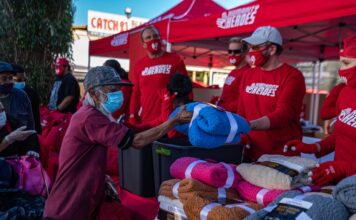As technology evolves, it effects change in society and has an impact on the way we look at things. According to futurist Ray Kurzweil, not only is change inevitable, but also the pace of change is growing exponentially. As humans, we find embracing change difficult because the brain is afraid of new things. This creates a false perception: change takes time. While that may have been true in the past, it is not the case anymore.
In my line of work as a brand and marketing consultant, I see the majority of business owners and managers (and marketing people) still work according to an old paradigm I call the “pre-Millennials world.” It’s important for CBD professionals who are part of such a disruptive industry to understand a few key concepts that have shifted in the new world, the post-Millennials world, so their businesses can grow.
One of country music’s biggest stars of all time, Merle Haggard, in 1969 released a song called “Okie from Muskogee.” The song debuted during a time of change, and the folks of “real America”—middle-class, often rural, Americans with “traditional values”—were afraid their way of life would disappear. Haggard captured the essence of their fear beginning with the song’s first line: “We don’t smoke marijuana in Muskogee…” Fifty years ago, no one could imagine cannabis (or hemp) would be legal in any way, shape, or form in Oklahoma, which legalized medical cannabis in June 2018 and became the quickest state to date to implement a licensed, full-fledged program.
Times change. We now live in the first period in human history in which people from many generations share the planet at the same time, from the Silent Generation (born around 1930) through those born in 2019, who compose the vanguard of Generation Alpha.
Generational diversity is important for marketing and branding, because these days three-year-old kids and their grandparents use the same devices to find information and consume content. Not long ago, parents and kids lived as totally different cultures with different wants and needs, consuming different content using different platforms. Today, three generations go to Taylor Swift concerts together, and they may even wear the same kind of clothing while taking selfies with their smartphones.
When it comes to branding, marketing, and advertising, this kind of generational shift makes demographics such as age, gender, and location less important than psychographics, or the reasons people do things—the needs and desires that motivate consumers to take action.
Today’s marketers must endeavor to understand why people from wildly divergent age groups, gender identities, skin colors, ethnicities, locations, and socioeconomic backgrounds all would consume the same product (CBD). If you discover the intangible “why,” you’ll get better results from your efforts.
For most people, the products they use are extensions of their self-image. They want a specific car, for example, because that car says something about them: It’s sporty, trendy, flashy, expensive, conservative, economical, environmentally friendly… That is their “why,” and the “why” is the reason they buy.
In order for your target customer base to believe your product or service is the answer to their “why,” you must create brand essence, a positive feeling and emotional bond between your customers and your product or service.
In the old days, there was no Google, no internet, no texting, and no Yelp or Angie’s List, so it was much easier for brands to mislead consumers, or at least shade the truth in ways beneficial to their products. Today, though, with one click of a thumb or mouse, customers can discover everything about a product’s composition and features, what people say about it, how salespeople conduct themselves, and even how the owner lives his or her life. Among other things, that means companies no longer are marketing products and services—they’re marketing themselves as a lifestyle choice. That’s why photos of products all over your Instagram feed usually don’t generate a lot of engagement, let alone sales. Your brand personality and essence are what you actually need to market, through experience, content, and information. Seventy-three percent of YouTube visitors are seeking a solution to a problem. Most Google queries are actually questions: how, why, where, when, who, what. Answering those questions is what drives sales in the post-Millenials world. That, not your product or service, should be your marketing focus. Today’s companies don’t produce only consumer goods, but also consumable content.
 Dino H. Carter is owner and chief strategist at D Branding, a brand consultancy helping clients develop unique strategies to grow market share, deepen brand awareness, and sustain growth. He possesses more than twenty years’ experience in marketing with companies including Levi’s and MTV Europe.
Dino H. Carter is owner and chief strategist at D Branding, a brand consultancy helping clients develop unique strategies to grow market share, deepen brand awareness, and sustain growth. He possesses more than twenty years’ experience in marketing with companies including Levi’s and MTV Europe.


